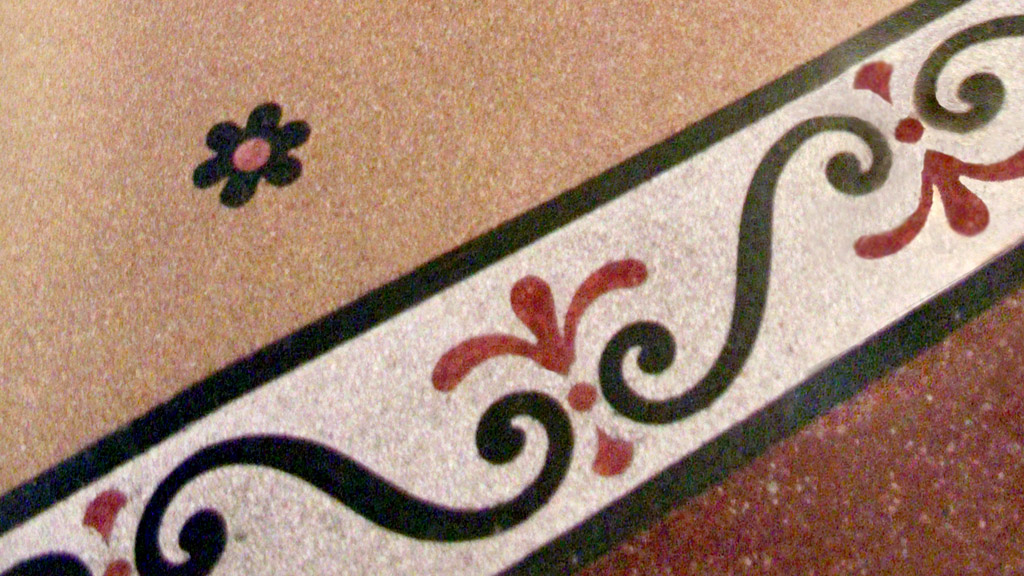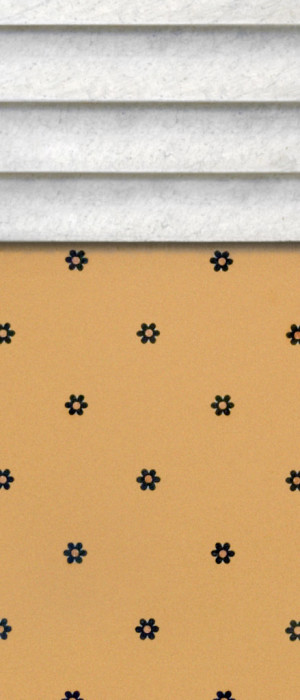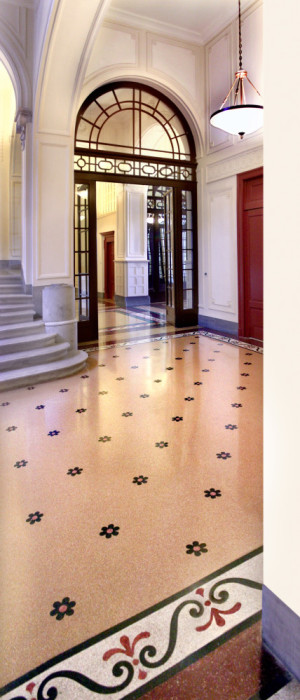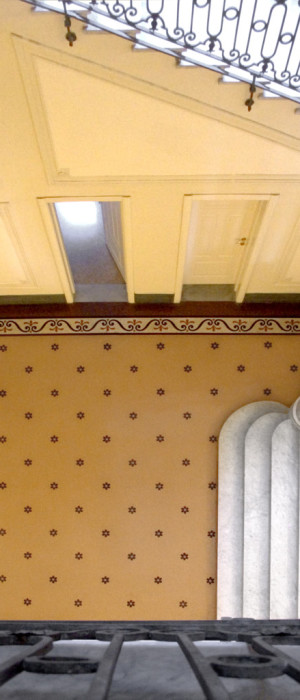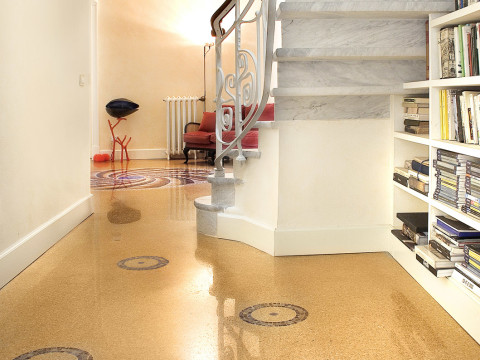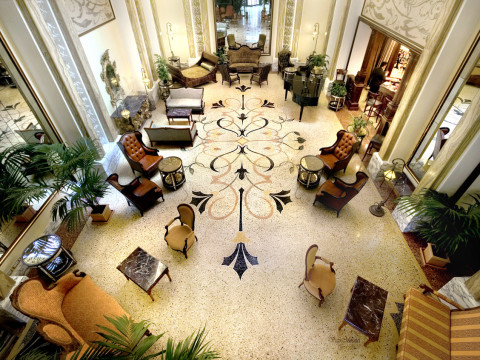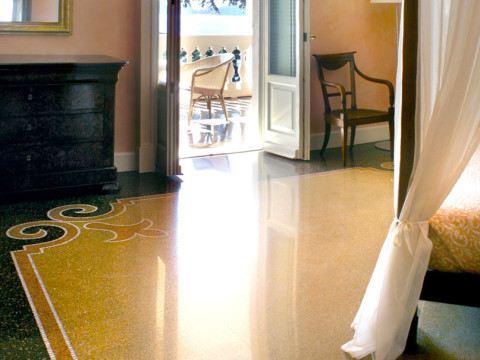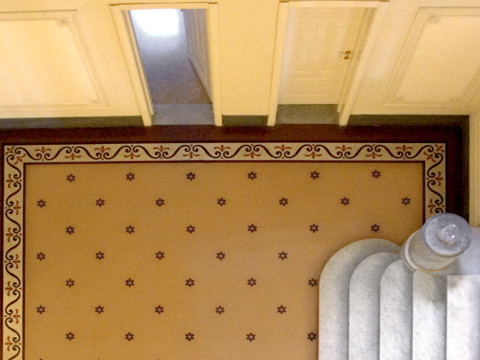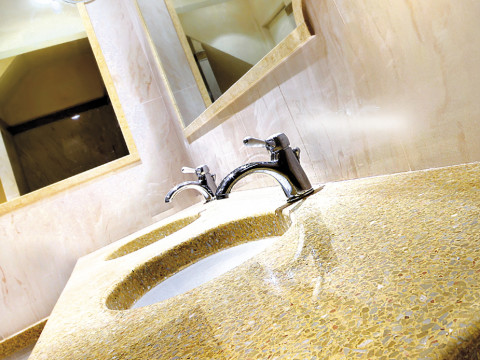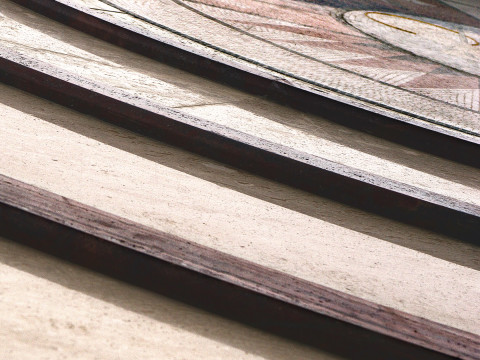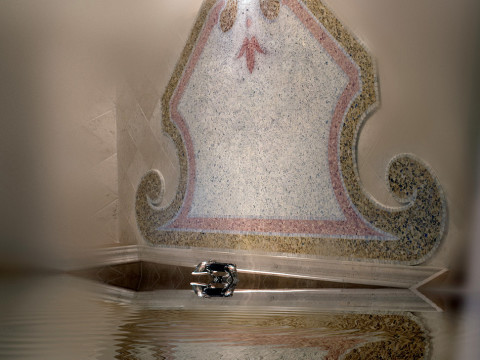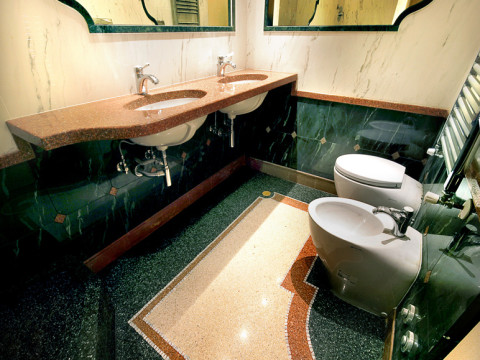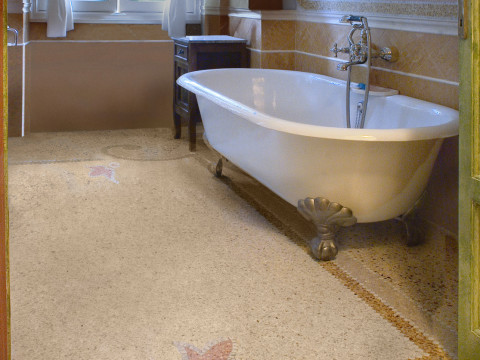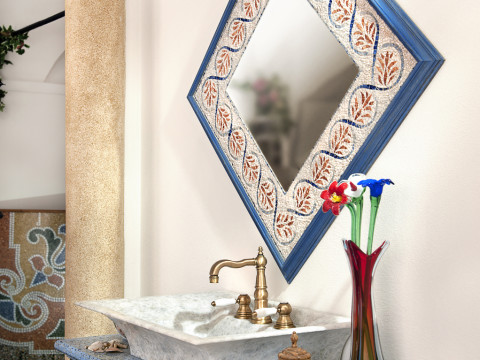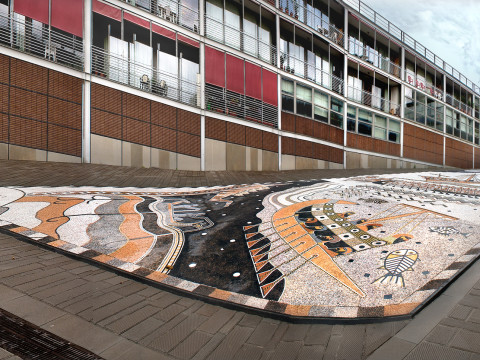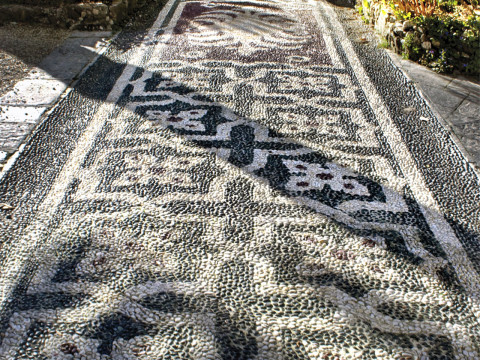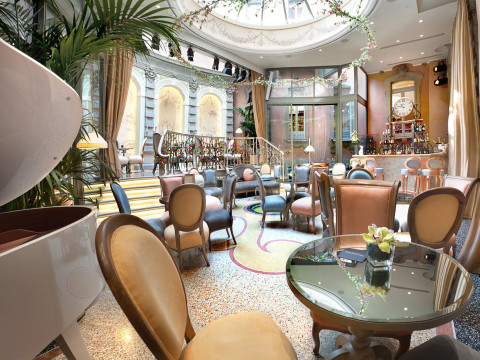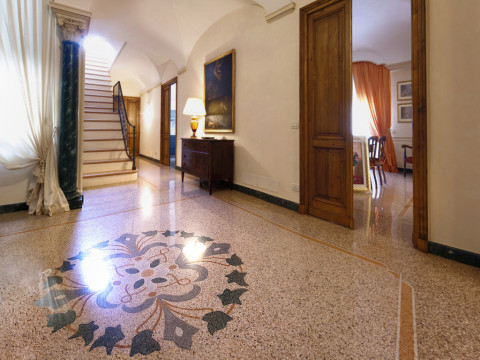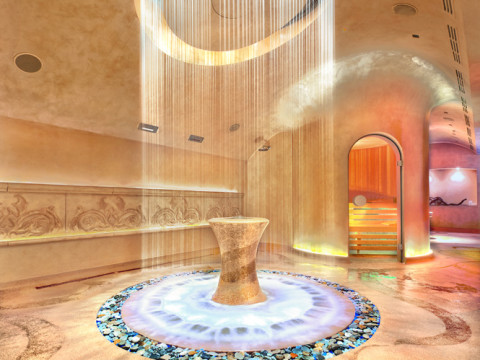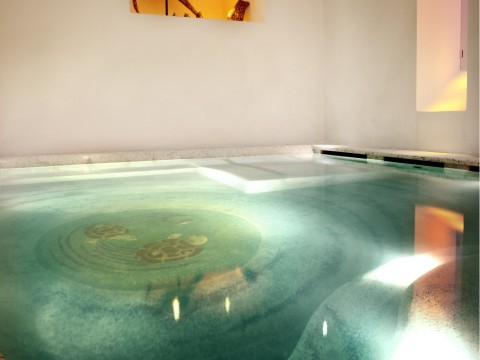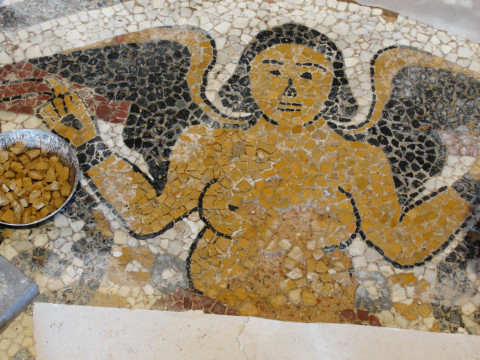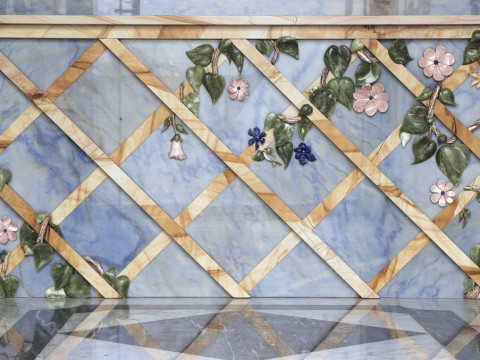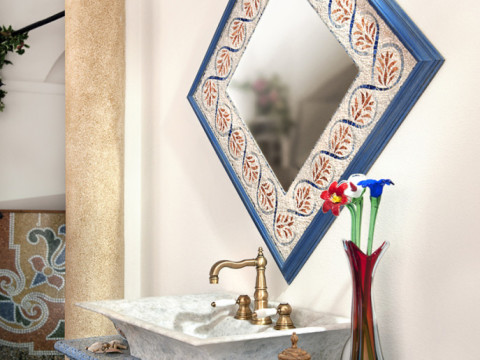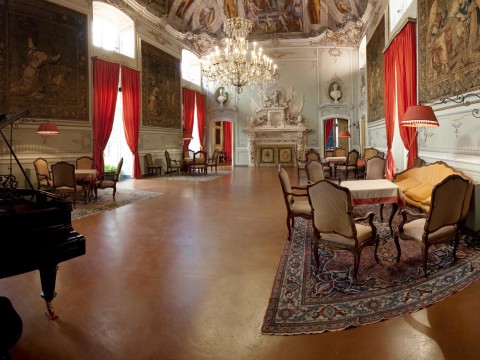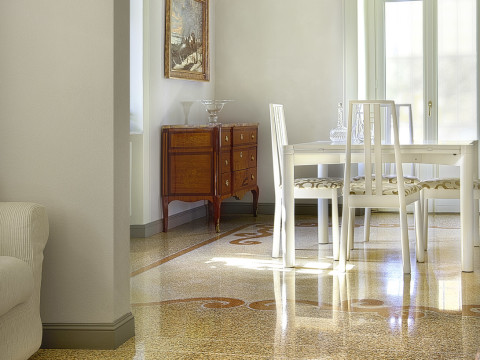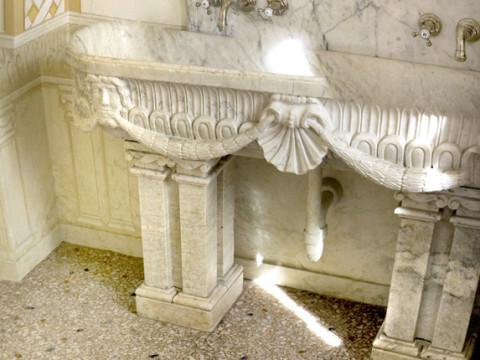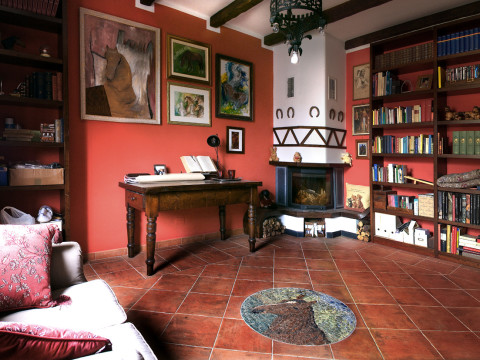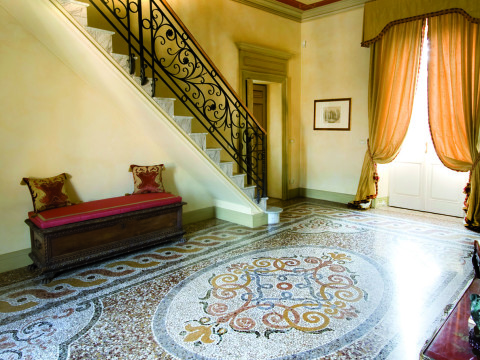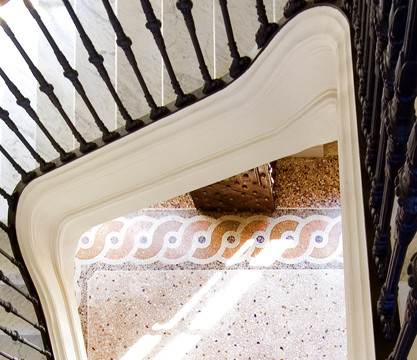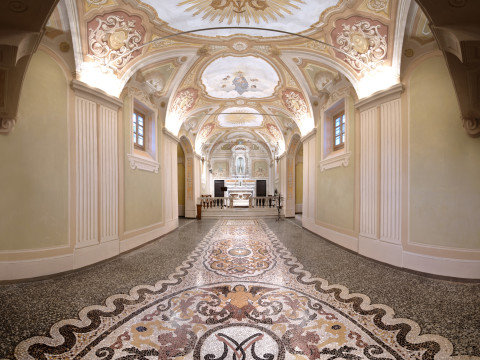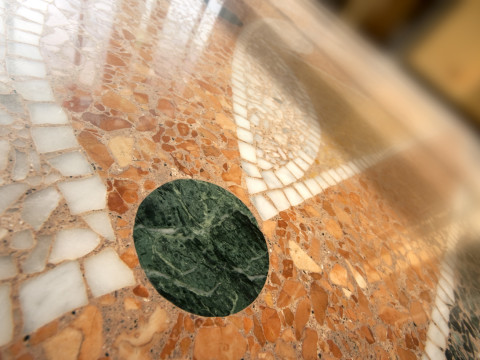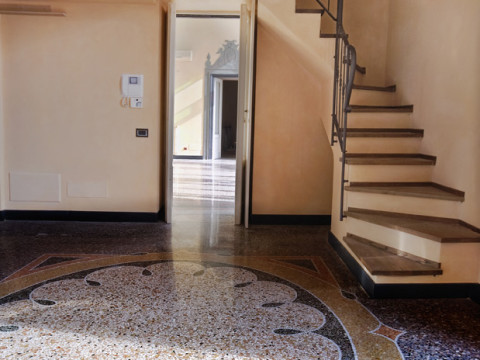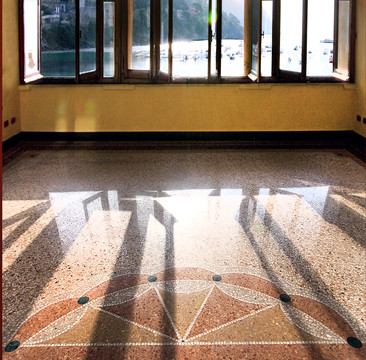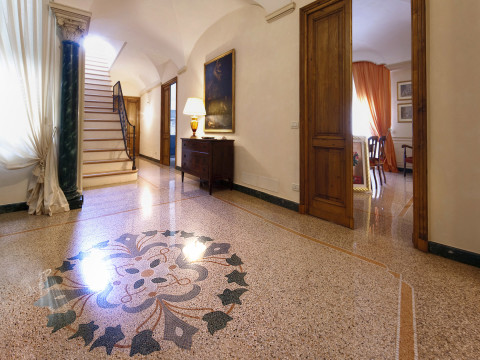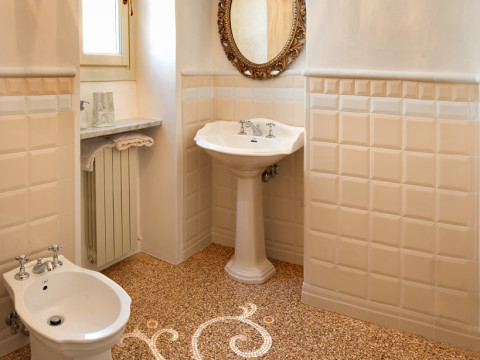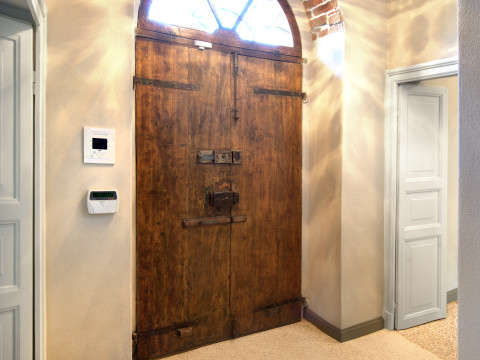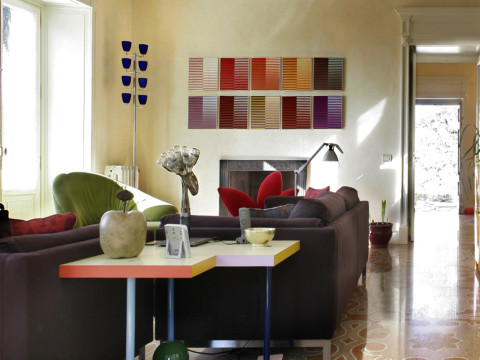
Marble Grit Floor a la Genovese
Realization
The realization of the terrace is divided into 4 main phases:
1 Preparation of the sub-base
The sub-base is made of a mixture of crushed pottery and sand – with particle sizes ranging from 4 mm to 12 mm – mixed with lime. Once laid the sub-base is flattened with a roller (about 90 kg) and tool (steel bar with a handle). Once this phase has been completed, a second layer of sub-base is laid and subsequently flattened to prepare it for the laying of the decorative mosaic.
2 Marking the decorations
The decoration is drawn on a sheet of glossy paper which is then perforated and deposited onto the substrate. The “dusting” technique allows to deposit white lime in the holes, which will trace the de-sign after removing the sheet of paper.
3 Installing the decorations
On the design traced with the “dusting “technique the craftsman extends the “pastina” which will tie the marble cubes. The decorations are performed directly on the spot or, when more complex, made in laboratory on fiberglass. After laying the decorations we proceed with the drafting of the mixture of marble grit and cement. Then we press with a roller to compact and remove excess cement.
4 Polishing
Since the floors are made of cement, drying time is about thirty days. After that we can polish. Sub-sequently, as the floor is dry, we can proceed in treating with linseed oil and ,after a short period, we will continue with the refinement and polishing by using wax or lead.
Techniques
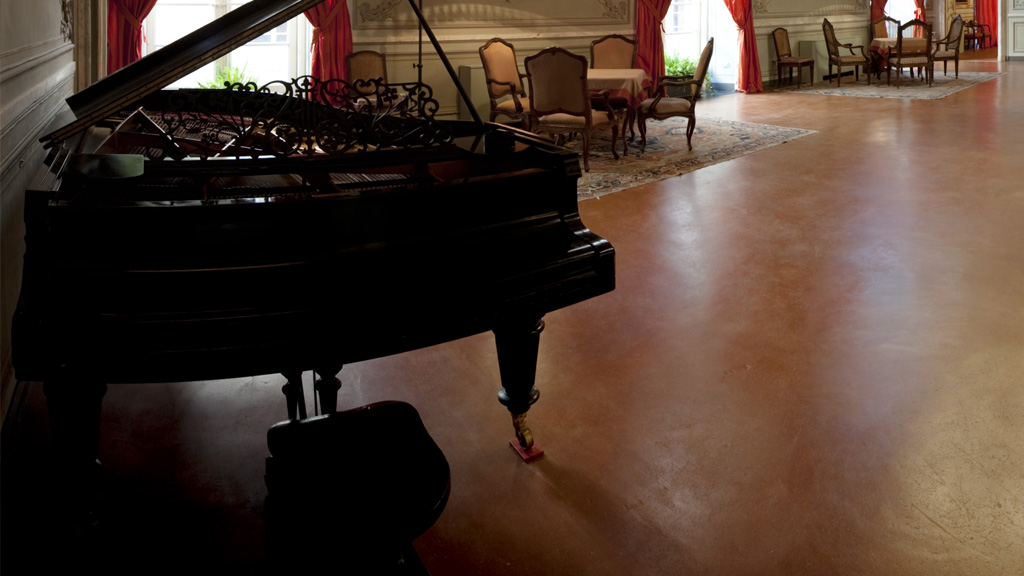
Crushed pottery
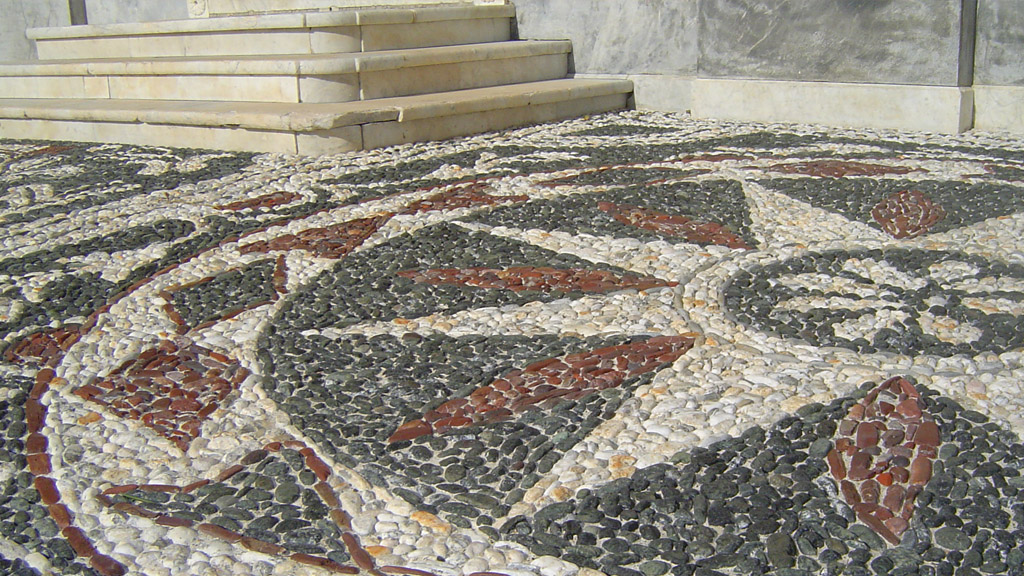
Cobbled Pavement
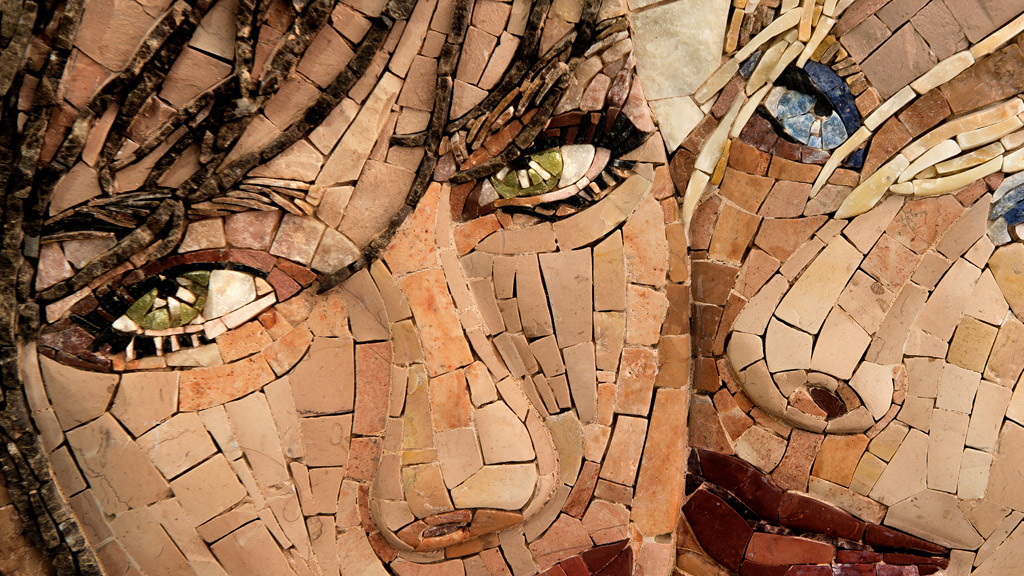
Mosaic
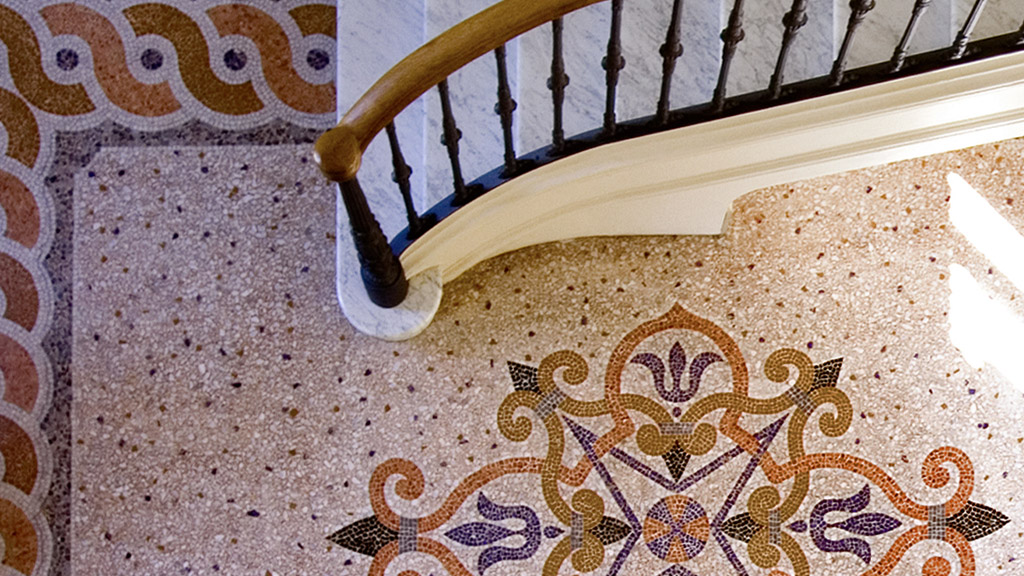
Venetian floors
